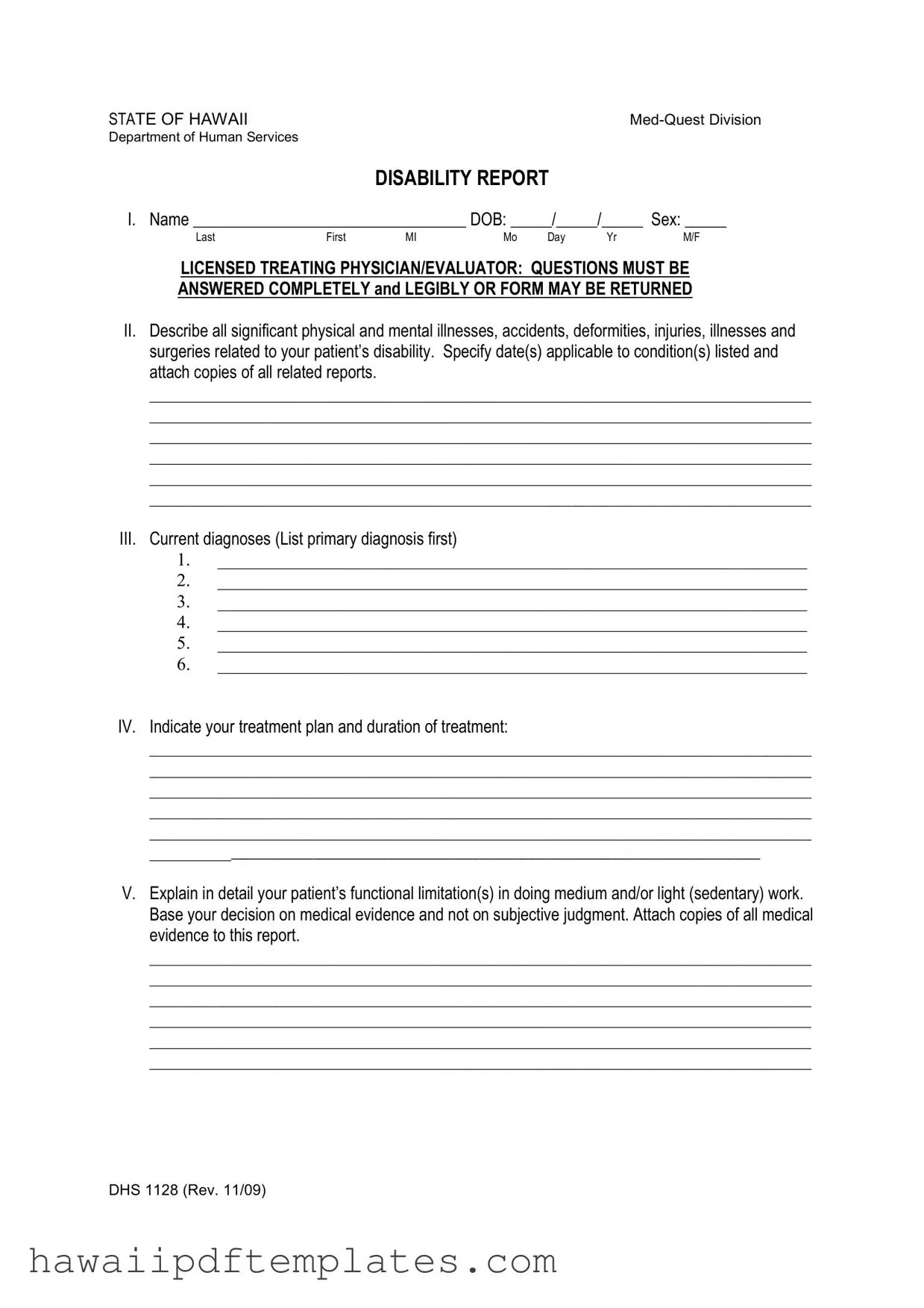Hawaii Dhs 1128 PDF Form
The Hawaii DHS 1128 form is a critical document used to report disabilities for individuals seeking assistance from the state’s Med-Quest Division within the Department of Human Services. This form requires detailed information about a patient's physical and mental health conditions, treatment plans, and functional limitations. Completing the DHS 1128 accurately is essential for ensuring that individuals receive the support they need, so take a moment to fill out the form by clicking the button below.
Customize Form Online
